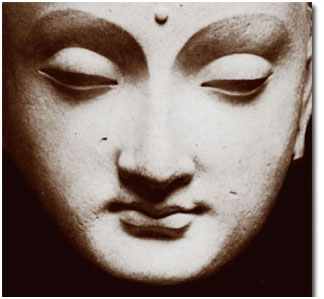- Home |
- Why With Us |
- About Us |
- Booking |
- Contact Us |
- Site Map
- Home
-
Nepal
-
Trekking
- Arun Valley with Gokyo Lakes
- Everest Base Camp Trek
- Everest- A Living Culture Exploration
- Everest Explore
- Everest Base Camp (via Thame) Trek
- Everest Base Camp with Kala Patthar
- Everest Comfort Trek
- Everest High Passes with Ama Dablam Base Camp
- Everest Mani Rimdu Festival Trek
- Everest Nagpa La Trek
- Everest with three high passes
- Gokyo Ri, Chola Pass & Chukung Ri with Kala Patthar
- Gokyo with Everest Base Camp
- Jomsom - Muktinath
- Jomsom - Muktinath
- Khayar Lake Trek
- Manaslu and Tsum Valley with Larkya La
- Upper Mustang Trek
- Manaslu High Circuit
- Manaslu, Tilicho Pass & Upper Mustang
- Annapurna Base Camp Trek
- The Annapurna Circuit Trek
- Annapurna Panorama
- Nar and Phu Valley Trekking
- Nepal Rhododendron Trek
- Royal Trek
- Saribung Trek and Expedition
- Annapurna Sanctuary Trek
- The Annapurna Sunrise Trek
- Expedition
-
Rafting
-
Peak Climbing
-
Tours
- Kathmandu-Chitwan-Jungle Tour with visit to Pokhara
- Dawn to Dusk Tour
- Historical, Natural & Cultural Tour with Camping
- Kathmandu Valley Temple Tour
- Temple - Panorama - Jungle Tour
- Taste of Nepal
- Central Nepal Tour
- Explore Nepal Tour & Trek
- Nepal Cross-country Tour
- Best of Nepal Tour & Treks
- Kathmandu valley rim Tour & Treks
- Nepal Culture Tour
- Introduction to Nepal Tour & Treks
- Nepal at a glance Tour & Treks
- Wonders of Nepal Tour & Treks
- Glimpses of Nepal Tour & Treks
- Through the Silhouette Tour & Treks
- Tent and Temple Tour
- Kathmandu-Chitwan-Pokhara Tour
- Historical, Cultural City and Jungle Tour
- Nepal Wildlife Tour
- Nepal Panorama Historical Tour
- Nepal Adventure Tour
- Nepal Pilgrimage Tour
- Ghalegaun-Ghanapokhara Homestay Tour
- Jungle Safari
- Adventure Sports
-
Trekking
- Tibet
-
Bhutan
-
India
- Yoga Tour
- About Us
-
The Great Himalayan Trail
-
Short Tours/Treks

Types of Meditation Offered by Makalu Adventure
 Though, we recognize that it would be difficult to masters all or any of these techniques to their fullest in any short trips like these, where most visitors’ priorities would be to visit places of interest and get to know the country, its people and culture as much better as possible. But still, we believe that there are ways of combining elements of Yoga and Meditation techniques that blend well with visitors’ interests providing good introductions and some insights into these ancient practices. Done in a group, these trips could be very fun filled and can also prove to be the opportunity where participants can share their experiences and encourage each other to continue the practice even after the completion of their trips.
Though, we recognize that it would be difficult to masters all or any of these techniques to their fullest in any short trips like these, where most visitors’ priorities would be to visit places of interest and get to know the country, its people and culture as much better as possible. But still, we believe that there are ways of combining elements of Yoga and Meditation techniques that blend well with visitors’ interests providing good introductions and some insights into these ancient practices. Done in a group, these trips could be very fun filled and can also prove to be the opportunity where participants can share their experiences and encourage each other to continue the practice even after the completion of their trips.
With regard to the types and forms of meditation offered in this program, the participant does not learn only one method of meditation, but practices a variety of methods (though the processes are the same), systematically going from gross to subtle, to subtler, and finally to subtle most. By contrast, most systems or schools of meditation utilize only one method of meditation, such as emphasizing sensory awareness, breath, mental witnessing, or mantra, while ignoring the others. In our yoga meditation, these are not separate schools of meditation. Rather, these individual meditations are parts of the whole, or steps along the way, within the greater process of meditation that systematically leads to the Realization of the eternal center of consciousness. In total we have devised four different types of meditation practices combining a perfect blend that bring about inward peace and mental harmony. They include (please click for the details):
- Classical Meditation
- Buddhist Meditation
- Relaxation Meditation
- Inner Power Meditation
Classical Meditation Ancient gurus developed various meditation techniques that assisted individuals to turn attention inward, away from distracting thoughts and emotions, in order to connect with unadulterated truth. Today these meditative methods remain relevant. According to Dr. Chintamani Gautam –our yoga guru, this type of meditation “helps individuals to enter into cosmic consciousness by freeing themselves from the bonds of the body through guru given meditation methods”. Seen in this flowering picture where the outer leaves of a rose bud break open gradually, looking a bit like "ohm fingers," the lightly touching thumb and forefinger of a classic meditation pose.
Ancient gurus developed various meditation techniques that assisted individuals to turn attention inward, away from distracting thoughts and emotions, in order to connect with unadulterated truth. Today these meditative methods remain relevant. According to Dr. Chintamani Gautam –our yoga guru, this type of meditation “helps individuals to enter into cosmic consciousness by freeing themselves from the bonds of the body through guru given meditation methods”. Seen in this flowering picture where the outer leaves of a rose bud break open gradually, looking a bit like "ohm fingers," the lightly touching thumb and forefinger of a classic meditation pose.
According to Dr. Gautam, two classic techniques that highlight this practice include the loving kindness meditation (metta bhavana) and compassion meditation (tonglen). With metta bhavana, we cultivate loving feelings first for ourselves, then for others and finally for our enemies. Tonglen requires us to accept the suffering of others by breathing in their pain and exhaling positive feelings to relieve suffering. Finally, according to Dr. Gautam, “the goal of this practice is to change old negative patterns of the mind into positive states of being”. Whether we follow this particular form of meditation for a specific reason or simply need some quite time to ourselves, this will help us to relax our mind and body, focus our thought, and refresh the spirit.
Buddhist Meditation: The purpose of Buddhist meditation, according to our Yoga Guru Dr. Chintamani Gautam is to gain more than an intellectual understanding of the truth; to liberate ourselves from the delusion and thereby put an end to both ignorance and craving. If the meditation does not produce results tending to this consummation — results which are observable in the character and the whole attitude to life — it is clear that there is something wrong either with the system or with the method of employing it. According to Dr. Gautam “it is not enough to see lights, to have visions or to experience ecstasy”. These phenomena are too common to be impressive to the Buddhist who really understand the purpose of Buddhist meditation. There are actual dangers in them which are apparent to one who is also a student of this form of meditation.
The purpose of Buddhist meditation, according to our Yoga Guru Dr. Chintamani Gautam is to gain more than an intellectual understanding of the truth; to liberate ourselves from the delusion and thereby put an end to both ignorance and craving. If the meditation does not produce results tending to this consummation — results which are observable in the character and the whole attitude to life — it is clear that there is something wrong either with the system or with the method of employing it. According to Dr. Gautam “it is not enough to see lights, to have visions or to experience ecstasy”. These phenomena are too common to be impressive to the Buddhist who really understand the purpose of Buddhist meditation. There are actual dangers in them which are apparent to one who is also a student of this form of meditation.
In this session, attentiveness to the movements of the body, to the ever-changing states of the mind, is to be cultivated in order that their real nature should be known. Instead of identifying these physical and mental phenomena with the false concept of "self," we are to see them as they really are: movements of a physical body, an aggregate of the four elements, (mahabhutas) subject to physical laws of causality on the one hand, and on the other, a flux of successive phases of consciousness arising and passing away in response to external stimuli. They are to be viewed objectively, as though they were processes not associated with ourselves but belonging to another order of phenomena.
Relaxation Meditation:
Relaxation meditation has long been a popular alternative therapy for those who are looking to add something extra to their health plan, not only for the benefits its boasts to concentration, memory, and mental clarity, but also because of its unparalleled ability to help people relax. Relaxation meditation allows people to take some time for themselves to unwind and start their day refreshed.
start their day refreshed.
The purpose of this meditation is to get in touch with our inner consciousness and create a deeper, more spiritual relationship with ourselves and the things around us. Relaxation meditation therefore is a great way to clear our mind helping us to clearing our mind and rejuvenating our body at once.
From an alternative therapy standpoint, relaxation meditation is highly recommended for those who suffer from depression, anxiety, and stress. With our busy scheduled lives and an unpredictable economy to deal with, many people suffer from these mental conditions, and Relaxation meditation can just be a perfect complement to medicine for those who need to change their state of mind and point of view.
Unlike any other technique taught by Dr. Chintamani Gautam, Relaxation meditation is the simplest forms of practice effectively providing relief from stress and anxiety immediately bringing peaceful, centered, and stress-free lifestyle.
Dr. Gautam makes use of various techniques including Music and varied simple yet effective asanas to effectively produce the benefit of this form of meditation. At the end of this session, participants feel totally awake, refreshed to peace, happiness, emotional balance and wellbeing.
Inner Power Meditation:
The most important journey we can take is the journey within. This is a journey to the truth of who we really are. This is the place, just beyond every day consciousness, where spiritual empowerment begins. Spiritual power gives us the power to choose creative thinking rather than automated thinking, response rather than reaction, peace, love and harmony rather than stress, conflict and chaos. The Inner power meditation as offered by Dr. Chintamani Gautam covers an introduction to meditation; rediscovering the true identity and nature of the self; understanding the true nature of consciousness and restoring our relationship with the Divine.
The Inner power meditation as offered by Dr. Chintamani Gautam covers an introduction to meditation; rediscovering the true identity and nature of the self; understanding the true nature of consciousness and restoring our relationship with the Divine.
The Inner power meditation enables us to embark on this inward journey giving us a clear spiritual understanding of ourselves, helps us re–discover and use the positive qualities already latent within us, enables us to develop our strengths of character and creates new attitudes and responses to life. Once we start to enjoy moments of silence and to savoir periods of introspection and reflection it immediately leads us to serenity and inner peace. The process of going within, disconnecting from harmful habits, connecting to our innate spiritual resources, and reconnecting with our external life, is personally empowering in a lasting way.
The Inner Power Meditation is taught as a method of stilling the mind which ultimately results in empowering the intellect to achieve insight and understanding of the spiritual laws and principles which sustain harmony and can bring natural renewal at all levels of life on earth.

Trekking in Nepal
Expeditions In Nepal
Rafting in Nepal
Tours in Nepal
All rights reserved.



